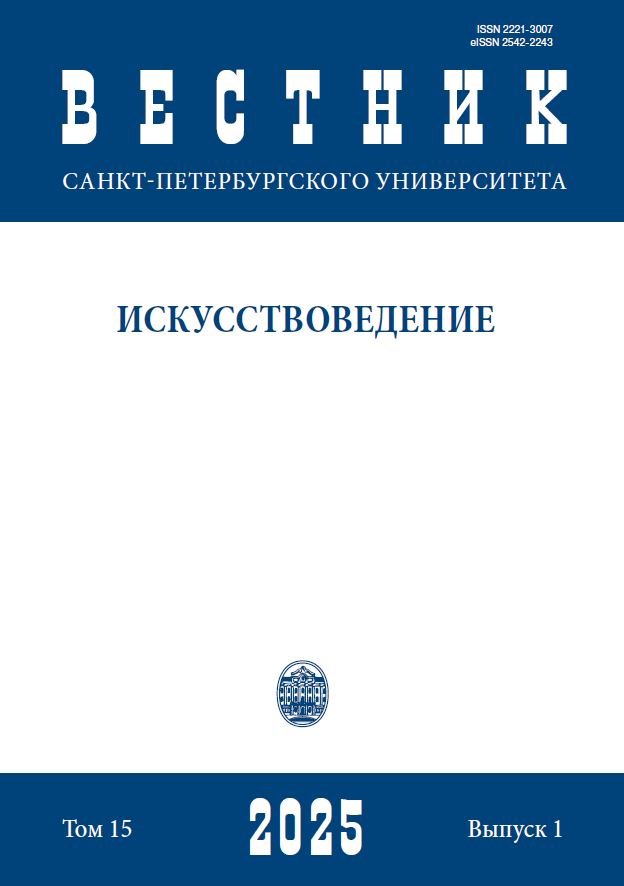“New Vocal Complexity”: Textured and Timbre Organization of Choral Compositions by B. Ferneyhough
DOI:
https://doi.org/10.21638/spbu15.2025.102Abstract
The researcher’s focus is on the choral work of the British composer Brian Ferneyhough (b. 1943). Despite the fact that the composer’s choral heritage is relatively small, each of the composer’s works is a unique example of the modern choral style, which is a genuine encyclopedia of the main techniques of vocal performance of the 20th century and poses extremely difficult problems for the performer. Ferneyhough’s first choral composition — “Missa brevis“ — combines Schoenberg’s timbre experiments with the temporary and timbre-textured ideas of the post-war avant-garde, including Stockhausen’s techniques of space composition, Nono’s diagonal texture and operation varieties of Boulez’s vocal emission. Ferneyhough’s individual techniques are genuinely innovative. One of them is the polychronic combination of sonorous part of texture, which in the following decades will become characteristic of the works by Stockhausen, Holliger, Ligeti. “Time and Motion Study III” — the second choral composition of the composer — becomes one of the most famous examples of the idea of phoneme composition today. The work presents extraordinary requirements for singers regarding not only elementary intonation, but also the possession of almost the entire palette of timbres techniques that existed at that time. Special researcher’s attention is paid to the study of the choral parts of Ferneyhough’s musical and dramatic action “Shadowtime”, combining the experience of verbal-musical (“Missa brevis”) and phoneme (“Time and Motion Study III”) compositions. Like the previous choral compositions by Ferneyhough, here are presented timbre-textured techniques that are fundamental to the compositions of the second half of the 20th century and, at the same time, clearly declares itself the individuality of the composer — in the desire for maximum articulatory detail of each sound in the conditions of the subtlest nuance and almost complete absence of a visual action, especially surprising for musical and dramatic composition. In this, the author of the article sees the relationship between “Shadowtime” and the late Nono’s works, promoting a focus on musical sound, a desire for a tireless search for a new one, a rejection of the usual and routine, to go beyond his professional capabilities.
Keywords:
Ferneyhough, Nono, Stockhausen, Boulez, Kagel, choral texture, vocal timbres, word and music, phoneme composition
Downloads
References
Downloads
Published
How to Cite
Issue
Section
License
Articles of "Vestnik of Saint Petersburg University. Arts" are open access distributed under the terms of the License Agreement with Saint Petersburg State University, which permits to the authors unrestricted distribution and self-archiving free of charge.






